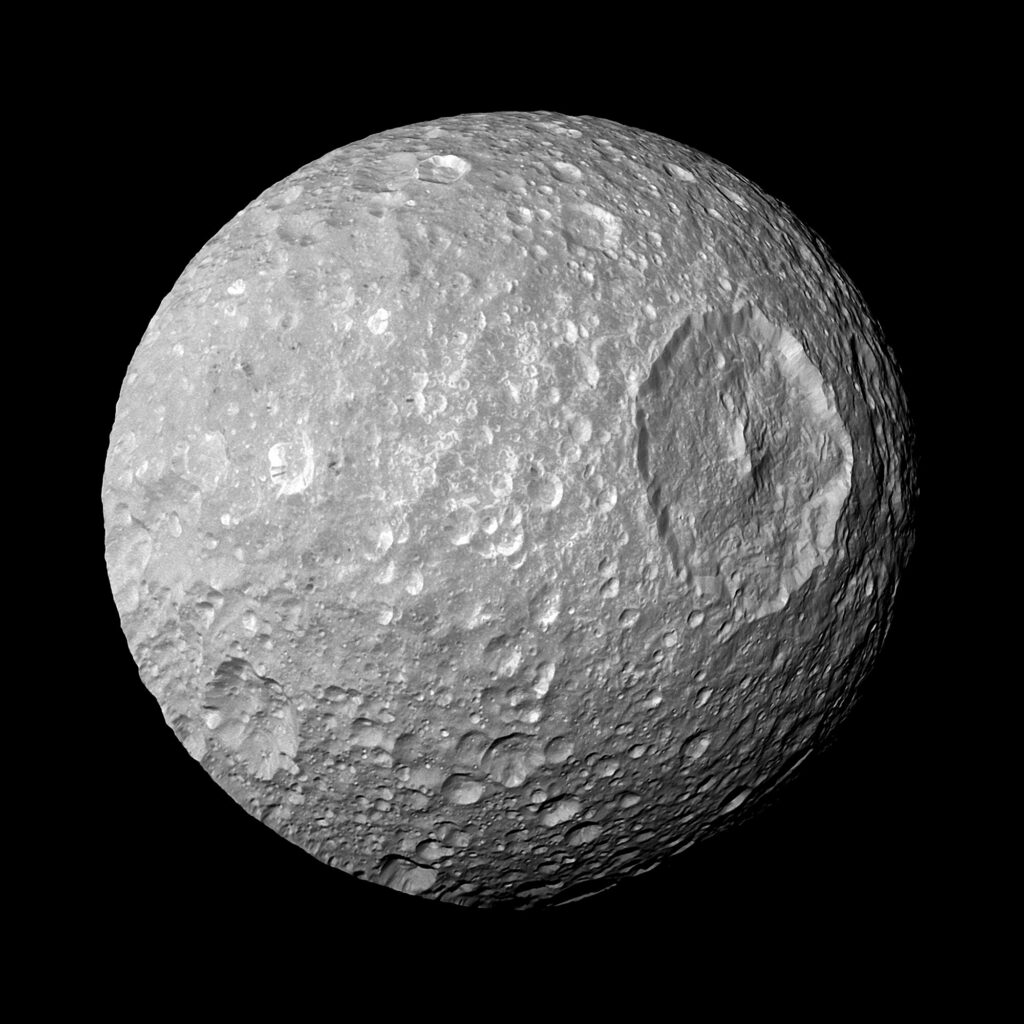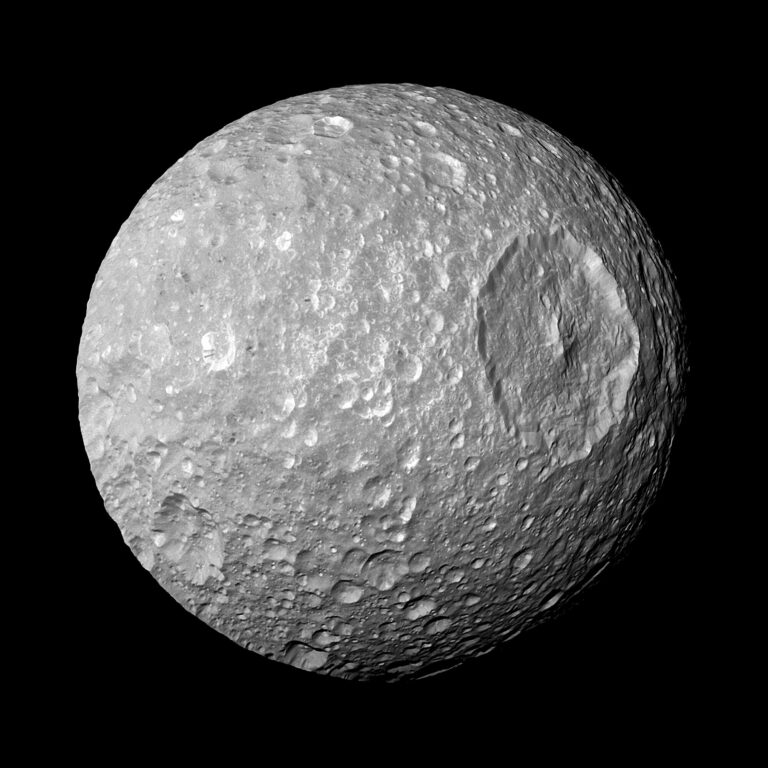Saturn’s moon resembling the Death Star could harbor an extensive subterranean ocean.
A team of French-led astronomers has made a significant discovery regarding Saturn’s Death Star-like mini moon, Mimas. Through analyzing changes in its orbit and rotation, the scientists have found compelling evidence of a vast ocean hidden beneath its icy surface. This ocean, estimated to be located 12 to 18 miles (20 to 30 kilometers) beneath the frozen crust, is believed to be more likely than an elongated rocky core. The findings are based on observations made by NASA’s Cassini spacecraft, which extensively studied Saturn and its numerous moons for over a decade before its final descent into the planet’s atmosphere in 2017.
Despite its small size, measuring only 250 miles (400 kilometers) in diameter, Mimas lacks the fractures and geysers typically associated with subsurface activity, unlike Saturn’s Enceladus and Jupiter’s Europa.
Co-author Valery Lainey of the Paris Observatory expressed surprise at the discovery, stating that Mimas was an unlikely candidate for harboring a global ocean and liquid water in general. This finding suggests the potential for Mimas to be a habitable world, although the time required for life to emerge remains unknown.
The results of this research have been published in the journal Nature.

Lainey suggests that the ocean fills approximately half of Mimas’ volume, while only accounting for a mere 1.2% to 1.4% of Earth’s oceans due to the moon’s small size. Despite its diminutive stature, Mimas possesses the second largest impact crater among all moons in the solar system, which has led to comparisons with the fictional Death Star from “Star Wars.”
In an accompanying editorial, Matija Cuk from the SETI Institute and Alyssa Rose Rhoden from the Southwest Research Institute expressed their admiration for the notion that relatively small, icy moons can house youthful oceans. They were not involved in the study.
Estimated to be between 5 million and 15 million years old, this subterranean ocean is considered too young to have left any visible marks on the moon’s surface. Lainey suggests that the overall temperature of the ocean would hover around freezing, but the water temperature at the seafloor could potentially be much warmer.
Nick Cooper, a co-author from Queen Mary University of London, believes that the presence of this “remarkably young” liquid water ocean makes Mimas an excellent candidate for studying the origins of life.
Mimas, discovered in 1789 by the English astronomer William Herschel, derives its name from a giant in Greek mythology.
This article is republished from PhysORG under a Creative Commons license. Read the original article.
Do not forget to share your opinion with us to provide you with the best posts !




0 Comments